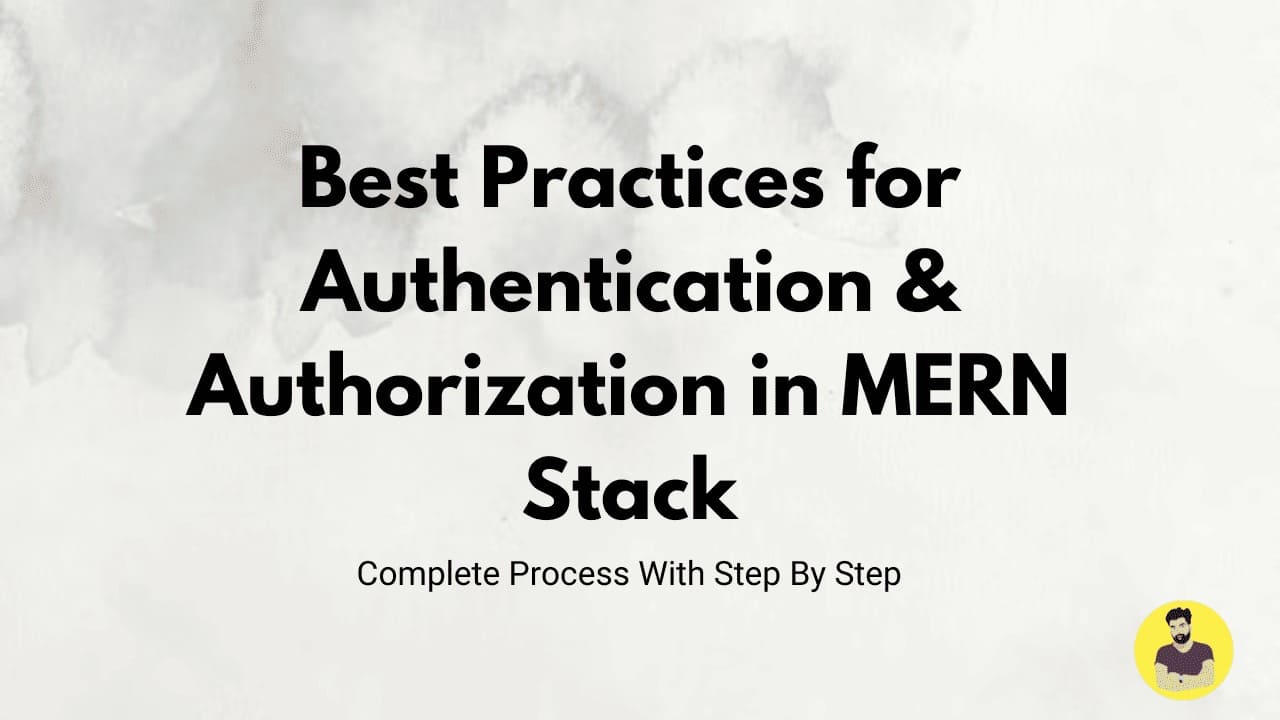
Best Practices for Authentication & Authorization in MERN Stack
The MERN stack, comprising MongoDB, Express.js, React, and Node.js, is a popular technology stack for building full-stack web applications. Authentication and authorization are crucial components of securing these applications, ensuring that only legitimate users can access specific parts of the app. Authentication verifies the identity of a user, while authorization dictates what actions or data a user can access. In this guide, we will explore the best practices for implementing robust authentication and authorization in a MERN stack application, helping developers safeguard their applications and users' data.
Step 1: Setting Up the Environment
Before diving into authentication and authorization, ensure that you have your MERN stack environment set up. Install the required dependencies:
- Backend: Node.js, Express, and MongoDB
- Frontend: React
- Authentication libraries: Passport.js, JWT (JSON Web Tokens), bcrypt.js for hashing passwords
- Session management: Cookie-session or express-session
npm install express mongoose bcryptjs jsonwebtoken passport passport-jwt cookie-parser
Step 2: Implementing User Registration & Password Hashing
The first step in authentication is securely handling user registration. To ensure user credentials are protected, passwords should never be stored in plaintext. Use bcrypt.js to hash the password before saving it to the MongoDB database.
Example:
const bcrypt = require('bcryptjs');
const hashPassword = async (password) => {
const salt = await bcrypt.genSalt(10);
return await bcrypt.hash(password, salt);
};
Step 3: User Authentication Using JWT
After user registration, you need to authenticate users by verifying their credentials during login. Use JWT to issue a token that will be stored client-side (typically in a cookie or local storage).
During login, compare the hashed password stored in the database with the entered password using bcrypt.
Example:
const jwt = require('jsonwebtoken');
const bcrypt = require('bcryptjs');
const loginUser = async (username, password) => {
const user = await User.findOne({ username });
if (user && await bcrypt.compare(password, user.password)) {
const token = jwt.sign({ userId: user._id }, 'your_jwt_secret', { expiresIn: '1h' });
return token;
}
throw new Error('Invalid credentials');
};
Step 4: Protecting Routes with JWT
To protect sensitive routes in your MERN application, you can use JWT middleware. Create a middleware function that verifies the JWT token on incoming requests, ensuring that only authenticated users can access certain routes.
Example:
const jwt = require('jsonwebtoken');
const authenticateJWT = (req, res, next) => {
const token = req.headers['authorization']?.split(' ')[1]; // Extract the token from the Authorization header
if (!token) return res.status(401).send('Access Denied');
jwt.verify(token, 'your_jwt_secret', (err, user) => {
if (err) return res.status(403).send('Invalid token');
req.user = user;
next();
});
};
Step 5: Implementing Role-Based Authorization
Once authentication is in place, role-based authorization can be used to limit what users can do based on their roles (e.g., admin, user). You can embed the user role inside the JWT payload, which allows easy access control on the server side.
Example:
const authorizeRole = (role) => {
return (req, res, next) => {
if (req.user.role !== role) {
return res.status(403).send('Permission Denied');
}
next();
};
};
Step 6: Frontend Implementation with React
On the client-side (React), store the JWT token in a secure way, such as in an HTTP-only cookie, which helps prevent XSS attacks. When making requests, attach the JWT token in the authorization header.
Example (React):
import axios from 'axios';
const fetchData = async () => {
const token = document.cookie.split('=')[1]; // Assume the JWT is stored in a cookie
const response = await axios.get('/protected-route', {
headers: { Authorization: `Bearer ${token}` },
});
console.log(response.data);
};
Step 7: Handling Session Expiry and Token Refresh
JWT tokens typically have an expiration time. It's important to handle token expiry by using a refresh token mechanism. When the access token expires, the user can request a new one using the refresh token.
Example:
const refreshToken = (req, res) => {
const refreshToken = req.cookies.refreshToken;
if (!refreshToken) return res.status(401).send('No refresh token found');
jwt.verify(refreshToken, 'your_jwt_secret', (err, user) => {
if (err) return res.status(403).send('Invalid refresh token');
const newAccessToken = jwt.sign({ userId: user._id }, 'your_jwt_secret', { expiresIn: '1h' });
res.json({ accessToken: newAccessToken });
});
};
Step 8: Secure the Application with HTTPS
In production, it's essential to ensure that communication between the client and server is secure. Set up HTTPS using SSL certificates to prevent potential man-in-the-middle attacks.
Conclusion
Authentication and authorization are foundational for securing MERN stack applications. By implementing best practices such as secure password hashing, JWT for authentication, role-based access control, and token refresh mechanisms, developers can ensure that their applications are both secure and scalable. However, no system is foolproof, and developers must continuously monitor and update their authentication and authorization processes to keep up with evolving security threats.
Cons of this Approach:
- Complexity: Managing token expiration and refresh tokens adds complexity to your application.
- Security risks: Improperly handling JWT or storing sensitive data in insecure places can lead to potential vulnerabilities.
- Session management: Managing sessions and token revocation can be tricky, especially for large-scale applications.
Related Tutorials
10 Most Important Tasks Every MERN Stack Developer Should MasterHow to Build a Full-Stack CRUD App with MERN Stack
Best Practices for Authentication & Authorization in MERN Stack
1. MEAN Stack vs. MERN Stack: Which One Should You Choose in 2025
Top 10 Node.js Best Practices for Scalable and Secure Applications
What Tasks Should You Give to Interns in a MERN Stack Project